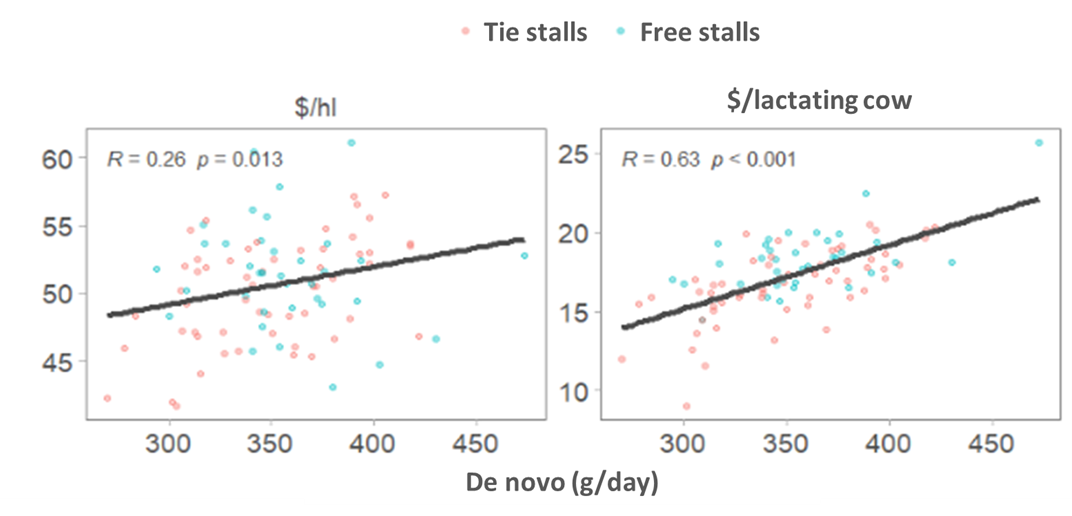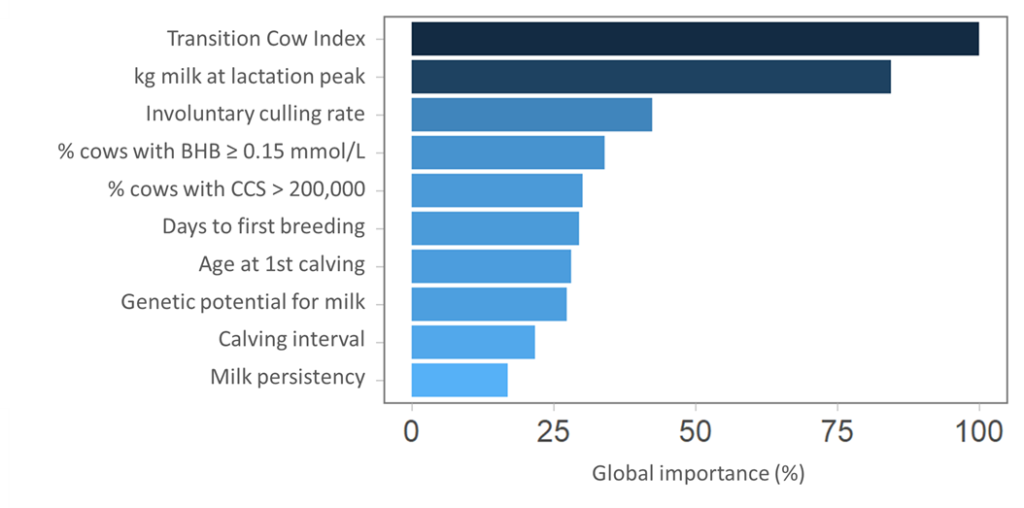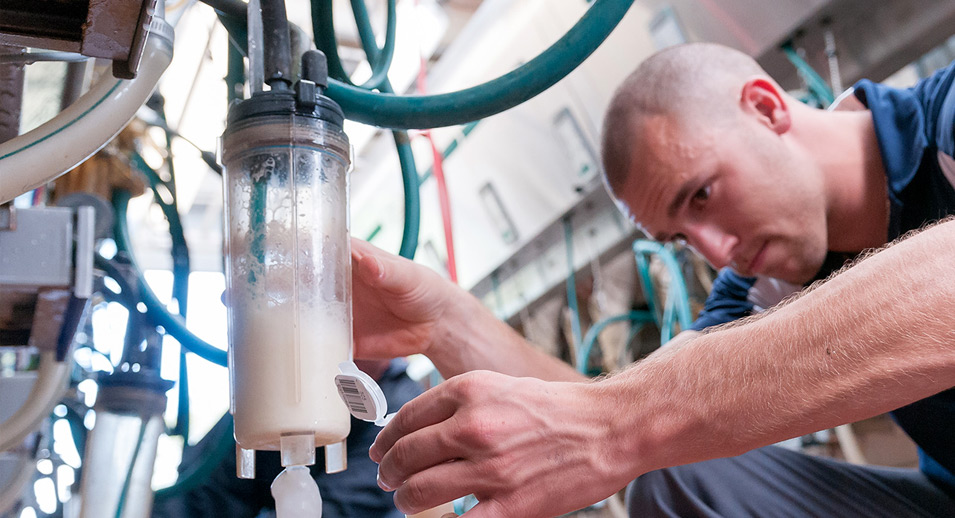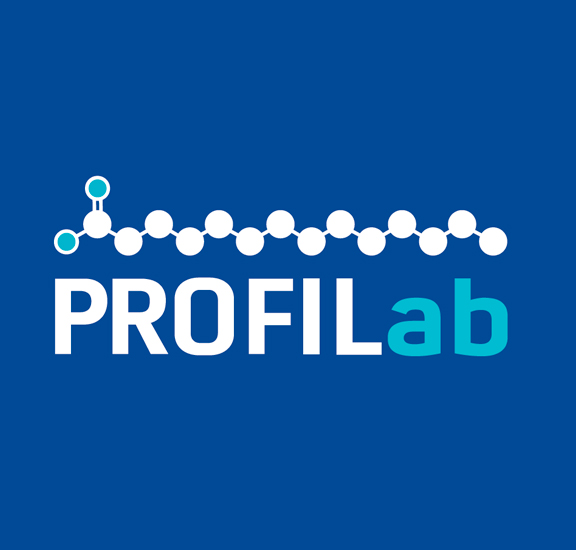Management Practices that Promote de novo Fatty Acid Production
- July 14, 2021
PROFILab analysis of bulk tank milk samples already allows us to use fatty acid profile to evaluate rumen health and feed management practices.

It is mainly the de novo fatty acids, which are synthesized from rumen fermentation precursors, that reflect rumen health and increase with milk fat.
From July to December 2020, we carried out a study on 102 dairy farms in Québec. The goal was to identify the management practices that promote the production of de novo fatty acids.
Highlights of the Study
Firstly, our results clearly indicate that the herds with the most de novo fatty acids also have the highest margin over feed cost. This is the case whether it is expressed in dollars ($) per hectolitres (hl) of milk or in dollars ($) per cow in milk (i.e., production unit) [Figure 1].
Figure 1. Margin over feed cost increased with increased de novo fatty acids for all 102 Quebec herds in the study

Good Transition, Good de novo
Yet another good reason to maximize de novo fatty acids in the milk. But how? First, use good transition management as depicted in the graph below [Figure 2]. The top 10% of herds in terms of de novo fatty acids have an average transition cow index which is extremely positive at 1300, whereas the bottom 10% have an average transition cow index which in negative (-10 on average).
There are also some other indicators that are related to a good transition: herds with more de novo also have better milk yield at peak lactation, a lower involuntary cull rate, and lower ketosis (BHB ≥ 0.15) and somatic cell count (SCC > 200,000) values.
Our results also show that in addition to genetic index, there are several other strategies that can be employed to increase the synthesis of de novo in the short term.
Figure 2. This graph shows the importance having good transition and reproduction management to maximize de novo fatty acids in g/day

How can I use de novo fatty acids to help optimize margin per cow?
A more in-depth analysis of individual cow fatty acids for these 102 farms suggests that we should target low de novo fatty acid variation within the herd, since the margin per lactating cow decreases with a greater dispersion [Figure 3].
Lactanet is presently working on developing a tool that will promote a better understanding of fatty acid profile in individual cows (milk recording samples). This is a good example of an indicator that can be integrated with PROFILab to deliver added value and provide a wider range of solutions using your farms results!
Figure 3. Margin over feed cost per cow increases with less dispersion of de novo fatty acids among the cows in the herd
Dispersion represents the median absolute deviation of de novo fatty acids in g/day adjusted by the number of cows in milk.


This project is funded through the Innov’Action agri-food program under the Canadian Agricultural Partnership, as part of an agreement between the governments of Canada and Quebec.












